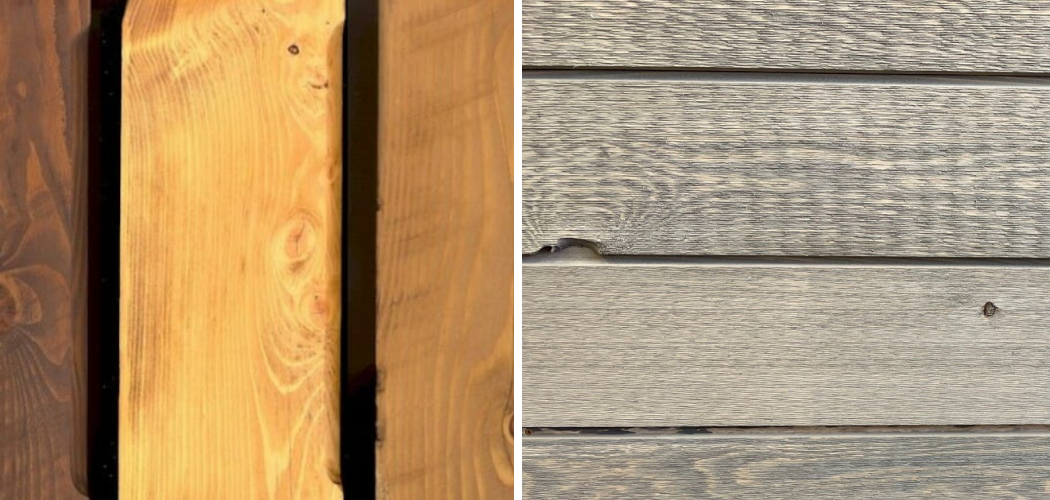Embarking on a woodworking project with Eastern Hemlock wood provides a canvas of natural beauty, and the art of staining becomes a pivotal step in enhancing its aesthetic appeal. Known for its pale, creamy tones and fine grain, Eastern Hemlock offers a versatile foundation for various staining techniques.
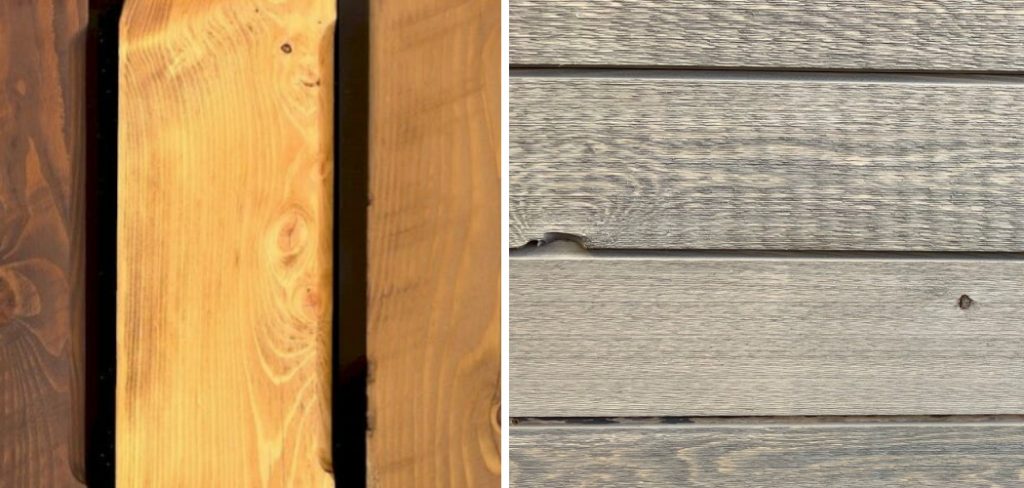
Whether you seek to preserve the wood’s natural elegance or add a touch of color, understanding how to stain eastern hemlock wood is essential for achieving the desired finish.
From selecting the right stain to mastering application methods, this article will guide you through the nuanced process of staining Eastern Hemlock wood, allowing you to unlock the full potential of this exquisite material and bring forth a harmonious blend of craftsmanship and natural charm.
Explore the transformative possibilities of staining Eastern Hemlock as we delve into the techniques that will elevate your woodworking projects to a new level of sophistication.
Importance of Staining Eastern Hemlock Wood
Staining Eastern Hemlock wood not only enhances its visual appeal but also adds a protective layer that prolongs its longevity. The importance of this process cannot be overstated; it is a critical measure to resist external elements such as moisture and UV rays that can lead to damage over time.
By selecting the appropriate stain, you infuse the wood with a durability that makes it suitable for a wide range of applications, from interior design accents to outdoor architectural elements. The stain penetrates the wood’s pores, highlighting the distinct grain patterns and elevating the wood’s natural textures, which ensures that each piece stands out as a unique work of art.
Characteristics of Eastern Hemlock Wood

Eastern Hemlock (Tsuga canadensis), with its inherently rustic charm, is commonly utilized in woodworking due to its distinctive characteristics. As a wood variety, it is relatively soft, making it manageable for craftsmen to work with, yet it has enough durability to serve in both structural and decorative capacities.
Its grain is typically straight and its texture is fine, providing a subtle elegance that shines through especially when well-stained. The wood’s natural light color ranges from a creamy white to a light brown, with a minimal presence of knots, making for an evenly absorbent surface for stains and finishes.
Its non-resinous nature allows it to take to staining without blotchiness or unpredictable color variations, resulting in a homogenous and aesthetically pleasing finish. Understanding these characteristics is essential for any woodworker looking to fully utilize Eastern Hemlock’s natural beauty and structural attributes in their projects.
Appearance and Grain Patterns of Eastern Hemlock Wood
The visual allure of Eastern Hemlock is defined by its grain patterns and overall appearance, which provide a harmonious canvas for stains and finishes. The wood typically exhibits a straight grain pattern that conveys a sense of uniformity and simplicity, ideal for projects where a clean and uncluttered look is desired.
Upon closer inspection, one can observe subtle variances in the grain, with occasional waves and swirls adding character and depth. The wood’s light, neutral color offers a perfect backdrop for stain application, allowing for a wide range of color outcomes that can complement various design palettes.
When stained, these grain intricacies are accentuated, turning each piece into a distinct work that underscores the natural origins of the wood. Artisans often exploit these grain patterns to enhance the wood’s innate beauty or to harmonize with the design aesthetics of a larger project.
Natural Color Variations

Despite its predominantly uniform color, Eastern Hemlock wood can exhibit natural color variations that range from the heartwood to the sapwood. The heartwood generally carries a slightly darker hue, often presenting a richer tan or brown.
In contrast, the sapwood is lighter, sometimes nearly white, adding to the wood’s overall visual texture. These inherent color differences can subtly influence the final appearance of the wood when stained, as the tone of the stain interacts uniquely with the underlying colors.
For woodworkers and artists, these natural variations are considered valuable characteristics, as they augment the authenticity and individuality of each project. When planning a staining project, it’s beneficial to consider how the chosen stain will play with the Eastern Hemlock’s natural color spectrum to achieve a truly customized finish.
Preparing Eastern Hemlock Wood for Staining
Before applying any stain, the preparation of Eastern Hemlock wood is a crucial step to ensure the best possible finish. Whether you’re working with a brand new piece or repurposing old wood, the process begins with a thorough sanding. Starting with a coarse grit and working your way up to a finer grit, sanding smooths the surface and opens up the pores of the wood to accept the stain.
After sanding, it is imperative to remove all dust and debris from the wood’s surface; a tack cloth or a vacuum with a brush attachment can be effective for this task. If the wood has any existing finish or significant damage, using a wood cleaner or stripper might be necessary to clear the wood of these imperfections.
Once the wood is sanded and cleaned, a pre-stain wood conditioner should be applied. This step is particularly important with softer woods, like Eastern Hemlock, to promote even absorption of the stain and prevent blotchiness. With meticulous preparation, your Eastern Hemlock wood will be ready to beautifully showcase the stain of your choice.
10 Methods How to Stain Eastern Hemlock Wood
1. Surface Preparation:
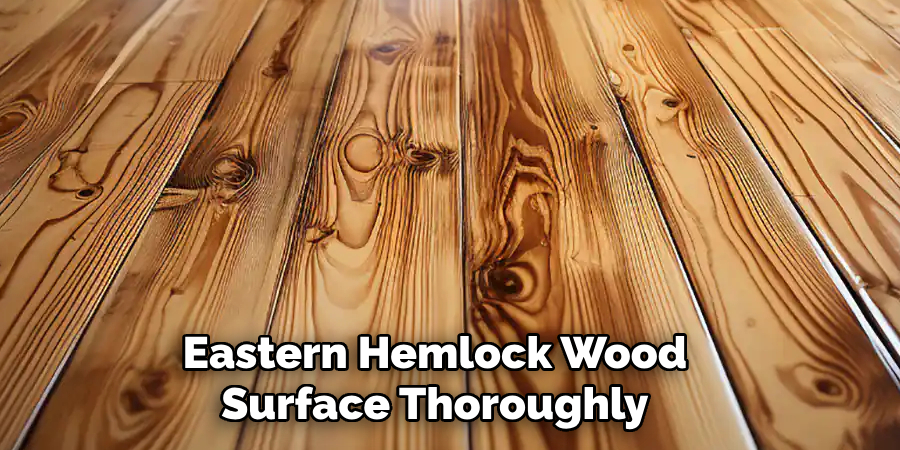
Before diving into the staining process, meticulous preparation is paramount. Sand the Eastern Hemlock wood surface thoroughly, starting with a coarse grit sandpaper and progressively moving to finer grits. This ensures a smooth and even surface, allowing the stain to penetrate uniformly. Depending on the condition of the wood, it may be necessary to use a wood cleaner and brightener prior to sanding.
Once the sanding process is complete, it is important to remove all dust and debris from the surface. Wipe down with a tack cloth or vacuum with a soft brush attachment. This step prevents particles from getting trapped in the stain and causing an uneven finish. However, do not use a damp cloth as this can raise the grain of the wood and create an uneven surface.
It is also crucial to properly protect surrounding areas before starting the staining process. Cover any nearby plants, furniture or other surfaces with plastic sheeting or drop cloths to prevent accidental splatters or spills.
2. Choosing the Right Stain:
Eastern Hemlock’s light color and fine grain make it receptive to a variety of stains. Opt for oil-based stains for a traditional, durable finish, or water-based stains for a quicker drying time and lower odor. Consider the wood’s natural hue and choose a stain that either enhances its original tone or imparts a desired color. When staining, test the stain on a hidden area of the wood to ensure the desired color and effect.
When choosing a stain for Eastern Hemlock wood, there are important factors to consider in order to achieve the best results. First, determine what type of finish you want – traditional or modern. This will help guide your decision between oil-based and water-based stains.
Oil-based stains provide a classic, durable finish that enhances the natural beauty of Eastern Hemlock wood. The oil penetrates deeply into the wood, bringing out its grain and color. These types of stains also tend to dry slower, giving you more time to work with the stain before it sets.
3. Testing Stains on Scrap Wood:
Before committing to the final project, test various stain options on a scrap piece of Eastern Hemlock. This allows you to observe how different stains interact with the wood, helping you make an informed decision on the desired finish.
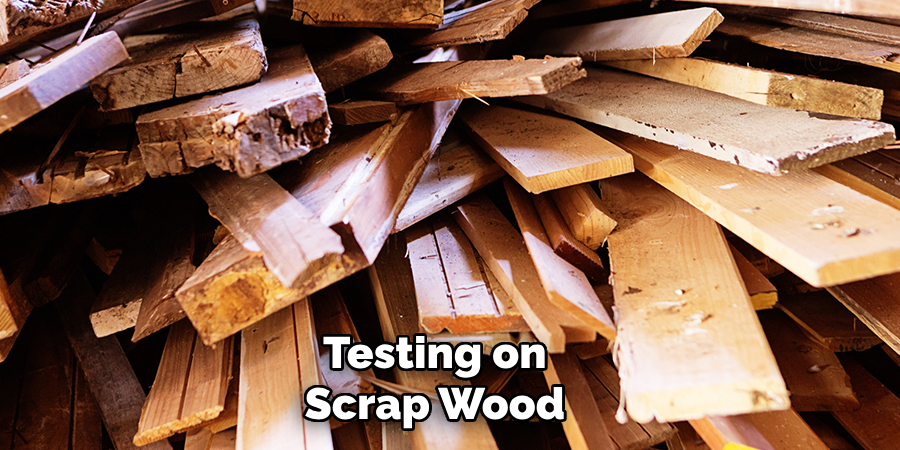
Consider factors such as absorption rate and color intensity. Additionally, testing on scrap wood also helps you practice your staining technique and identify any potential issues before starting on the final project.
It is important to note that different types of wood can react differently to stain. For example, softwoods tend to absorb stains unevenly while hardwoods have a more consistent absorption rate. It is also worth considering the grain pattern of the wood as it can impact the appearance of the stain.
When testing stains, always start with a clean and sanded piece of wood. This will ensure that the stain is applied evenly and accurately reflects its true color. Apply the stain according to the manufacturer’s instructions and allow it to dry completely before making any judgments on its appearance.
4. Pre-Stain Conditioner Application:
Eastern Hemlock can be prone to uneven stain absorption due to its fine grain. Applying a pre-stain conditioner helps to mitigate this issue by ensuring the wood absorbs the stain uniformly. Follow the manufacturer’s instructions for application and drying times. After the pre-stain conditioner has fully dried, lightly sand the wood with a fine grit sandpaper to remove any raised grain.
It is important to note that not all wood species require a pre-stain conditioner. Eastern Hemlock can be particularly tricky due to its fine grain, but other types of wood may not need this step. It’s always best to do some research or consult with a professional before deciding whether or not to use a pre-stain conditioner.
Another benefit of using a pre-stain conditioner is that it can help the stain to penetrate more evenly, resulting in a more uniform color. This is especially important if you are planning to apply multiple coats of stain.
5. Stain Application Techniques:
Experiment with different application techniques to achieve varying effects. Brushing on the stain provides a traditional finish, while wiping allows for better control and a lighter appearance. Consider using a foam brush, rag, or sponge, adjusting the method based on the level of absorption and the desired outcome.
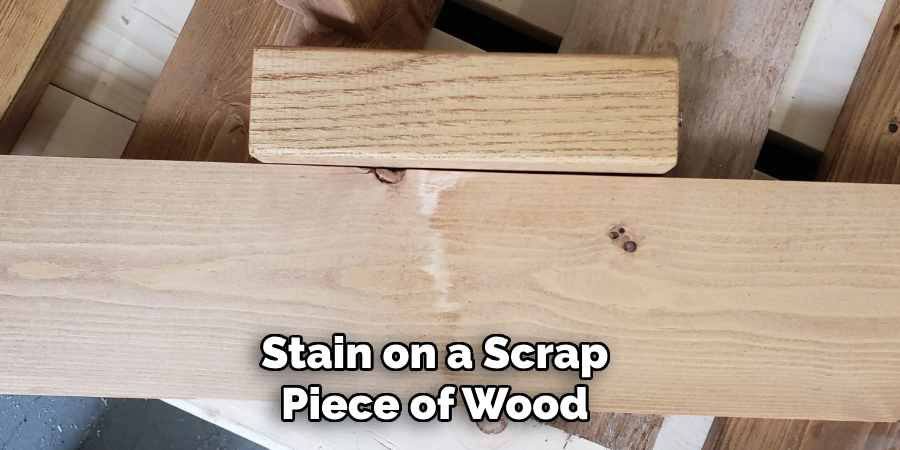
To achieve a more uniform and even finish, start by testing the stain on a scrap piece of wood. This will allow you to see how the color appears and how it reacts with the type of wood you are using. It is also important to make sure that your work area is well-ventilated and that you wear appropriate protective gear, such as gloves and a mask, when applying the stain.
For a more interesting and dynamic look, consider layering multiple colors of stain. This can be done by either using different stains on top of each other or by using a combination of staining and painting techniques. For example, you can paint a base color onto the wood and then use a rag to apply a different colored stain over it, creating a unique and textured appearance.
6. Layering Stains for Depth:
To add depth and dimension to Eastern Hemlock, consider layering multiple stains. Apply a base coat, let it dry, and then apply a second stain to achieve a nuanced and rich finish. This method allows you to create a custom look that complements the wood’s natural characteristics.
Besides Eastern Hemlock, layering stains can also enhance the beauty of other wood species such as Red Oak, Cherry, and Walnut. Each wood has its own unique grain patterns and color variations that can be highlighted through the layering process.
Layering stains not only adds depth to the appearance of the wood but also provides added protection. By using multiple coats of stain, you create a thicker barrier against potential damage from water, humidity, and sunlight. This can extend the lifespan of your wood furniture or flooring.
7. Blending Stains for Uniformity:
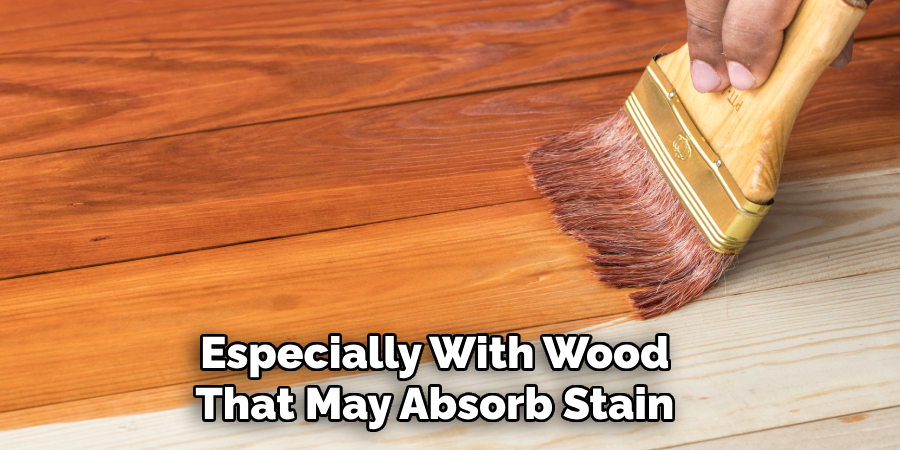
Achieving a uniform appearance can be challenging, especially with wood that may absorb stain unevenly. Blend stains together before application to create a consistent color.
This technique is particularly effective when working with large surfaces or projects where color consistency is crucial. Although it may seem daunting, blending stains is a simple process that can be easily mastered with the right tools and materials.
8. Sealing the Stained Wood:
Once satisfied with the stain application, seal the Eastern Hemlock wood to protect and enhance the finish. Polyurethane, varnish, or lacquer are popular choices for sealing. Select the appropriate sheen (matte, satin, or glossy) based on your aesthetic preferences.
After allowing the stain to dry completely, lightly sand the surface with a fine-grit sandpaper to smooth out any imperfections or raised grain. This will also create a better surface for the sealant to adhere to.
When applying the sealant, use long and even strokes, following the direction of the wood grain. Be sure to apply a thin coat and avoid over-saturating the wood, as this can lead to uneven drying and potential damage to the finish.
9. Post-Stain Sanding for Smoothness:
After the stained wood has fully dried, lightly sand the surface with a fine-grit sandpaper to smooth out any raised wood fibers or imperfections. This step prepares the surface for additional coats of stain or the sealing process, ensuring a flawless final result. However, post-stain sanding should be done with care to avoid damaging the finish.
To begin, use a fine-grit sandpaper of at least 220 grit and gently sand in the direction of the wood grain. Using light pressure and long strokes, move the sandpaper across the surface until it feels smooth to the touch. Be sure not to apply too much pressure as this can cause scratches or remove too much of the stain.
Once the entire surface has been sanded, wipe it down with a clean cloth to remove any dust or debris. This will also help to reveal any areas that may still need additional sanding to achieve the desired smoothness.
10. Maintaining and Refinishing:
Proper maintenance is essential for preserving the beauty of stained Eastern Hemlock wood. Avoid harsh cleaning agents that can strip the finish, and regularly inspect for wear and tear. If the stain begins to fade or show signs of damage, consider refinishing by repeating the staining and sealing process. This will not only restore the color and protection of the wood, but also extend its lifespan.
When refinishing, it is important to properly prepare the surface by sanding away any previous finish or imperfections. Use a fine-grit sandpaper to smooth out the wood and create a clean surface for the new stain to adhere to. After sanding, thoroughly clean the wood to remove any dust and debris.

When choosing a stain for refinishing, consider the color and opacity desired. A semi-transparent stain will allow the natural beauty of the Eastern Hemlock wood to show through, while a solid stain will provide more coverage and color consistency.
Conclusion
In conclusion, mastering the art of staining Eastern Hemlock wood can enhance both its natural beauty and longevity in your woodworking projects. By understanding the unique characteristics of Eastern Hemlock, such as its grain patterns and porosity, and following proper preparation and application techniques, you can achieve stunning results.
Choosing the right stain and sealant, and applying them with care, ensures a rich and even finish that highlights the wood’s inherent charm. Remembering safety precautions throughout the staining process is essential for a successful and enjoyable experience.
With patience and attention to detail, you can transform Eastern Hemlock wood into exquisite pieces that radiate warmth and elegance in any space. Thanks for reading, and we hope this has given you some inspiration on how to stain eastern hemlock wood!

